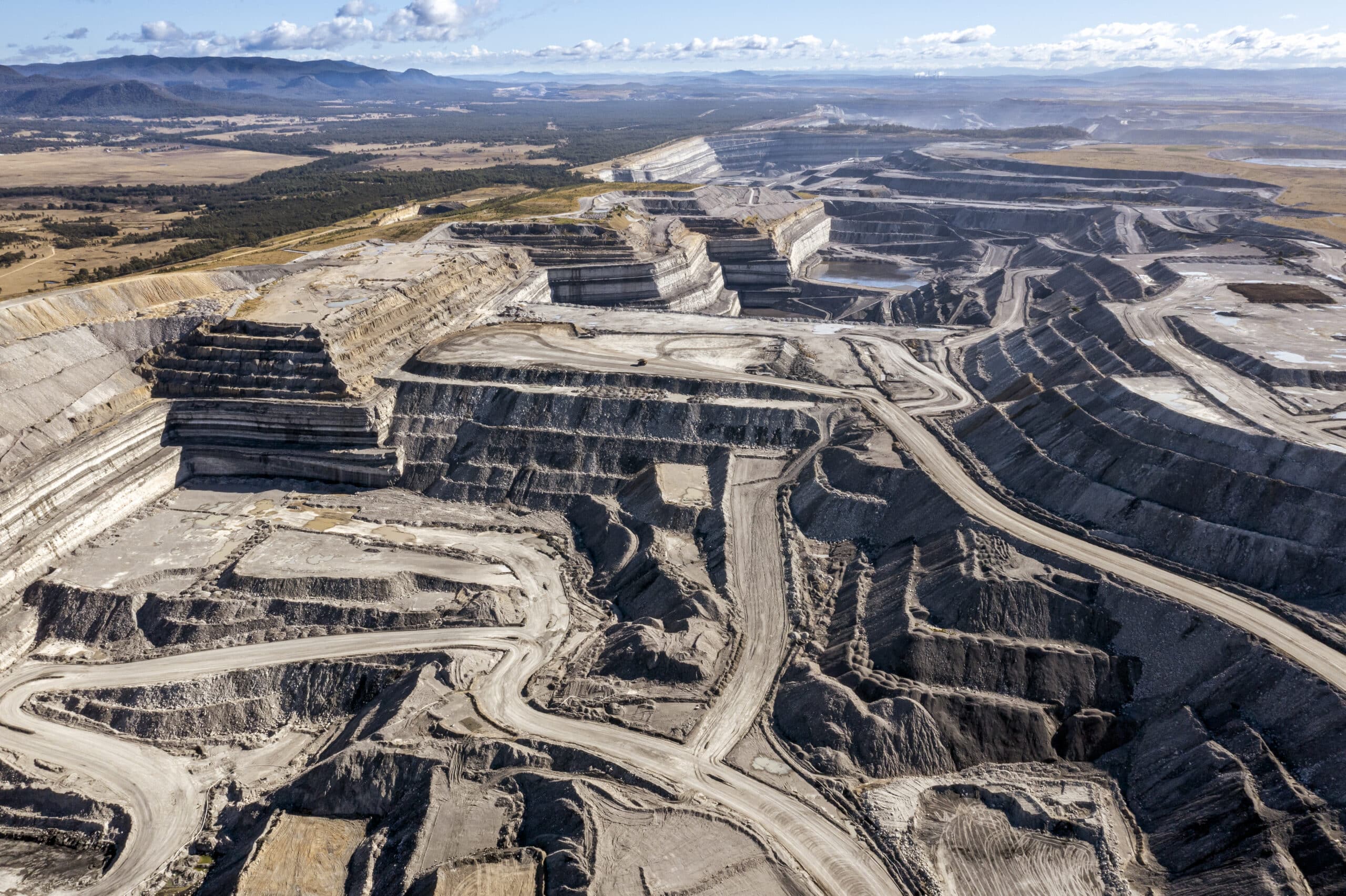"We find it utterly incomprehensible that Minister Plibersek has rejected thousands of scientific reports including the IPCC and hundreds of reports by her own department. The science is clear." — ECoCeQ President, Christine Carlise

The Environment Council of Central Queensland is taking Environment Minister Tanya Plibersek to the Federal Court in landmark climate litigation to protect Australia’s living wonders from new coal and gas.
The litigation is challenging two decisions made by Minister Plibersek in May 2023. In these decisions, she refused to register the climate impacts of three proposed coal mine expansions on thousands of Australia’s living wonders.
These are the first court challenges to a coal or gas decision made by Australia’s current Environment Minister.
What were the Minister's decisions?
In legal terms, the Minister decided the climate harms identified in thousands of pages of evidence put before her should not change the risk assessment carried out by the previous government for the particular mines.
She decided these climate harms are not relevant under the EPBC Act to her risk assessment of three proposed mines:
- MACH Energy’s Mount Pleasant Coal Mine in the Upper Hunter Valley
- Whitehaven’s Narrabri Coal Mine in northwestern NSW
- Idemitsu Australia’s Ensham Coal Mine in Queensland’s Bowen Basin.
At the same time as these decisions were made, the Minister also proposed to approve the Labor government’s first coal mine – the new Isaac River mine in Queensland’s Bowen Basin (which was not subject to the Living Wonders legal intervention).
Why do these decisions matter?
The Environment Protection and Biodiversity Conservation Act (EPBC Act) is the central piece of Australia’s environmental protection framework.
Among other things, the EPBC Act gives the minister a vital responsibility: the fate of nationally significant places, ecosystems, plants and wildlife.
Under the EPBC Act, the minister must safeguard animal and plant species at risk of extinction, as well as places of deep significance for First Nations people, World Heritage sites, National Parks, the Great Barrier Reef Marine Park, internationally significant wetlands and marine environments.
These places, species and ecological communities are called ‘Matters of National Environmental Significance’ under the Act.
As part of this safeguarding process, the Minister is required by the EPBC Act to make a decision about what the adverse impacts or likely adverse impacts of a particular proposal (including fossil fuel proposals) might be on any and all Matters of National Environmental Significance. Where the Minister decides that a proposal has, will or is likely to have an adverse impact, the EPBC Act requires that Matter be listed as a ‘controlling provision’ for the proposal.
When a matter of national environmental significance is set as a ‘controlling provision’, it means the likely harm to those places or species must be properly taken into account before the project can be approved.
About the reconsideration requests
In July last year, under a rarely used section of the EPBC Act, ECoCeQ, represented by Environmental Justice Australia, submitted 19 reconsideration requests to the minister, covering almost all new coal and gas proposals awaiting federal approval.
These requests set out the climate risk ECoCeQ argues must be identified from these fossil fuel proposals to thousands of animals, plants and places in Australia that are nationally significant living wonders.
The requests are supported by a large bank of evidence, reports from two of Australia’s leading climate scientists, and continent-wide mapping evidence showing, for the first time, the impact of the 2019-2020 climate-fuelled bushfires on hundreds of species and places under the Minister’s statutory ‘watch’.
ECoCeQ’s 19 applications for reconsideration argue the Environment Minister has an obligation to review significant information, including the government’s vast body of scientific evidence, and register the detrimental effect of the 19 fossil fuel projects on 2121 nationally significant species, places, and ecological communities because of their material contribution to climate change.
What were the Minister's reasons for the decisions?
The Minister’s department has provided reasons for each of the three decisions:
- Read the Statement of reasons for Whitehaven’s Narrabri Coal Mine
- Read the Statement of reasons for MACH Energy’s Mount Pleasant Coal Mine
- Read the Statement of reasons for Idemitsu Australia’s Ensham Coal Mine
The Minister’s reasons are largely the same for all three projects. In summary, she indicates she accepts the extraction of fossil fuels contributes to climate change and accepts our client’s analysis about the devastating impact of climate change on Matters of National Environmental Significance right across the Australian environment.
However, despite this, the Minister’s reasons state she does not accept that the impacts of the particular projects will be substantial. She rejects our client’s argument that these projects meet the test for an ‘impact’ under the EPBC Act.
The Minister’s decision is underpinned by two main conclusions.
First, she determined each proposed coal mine will not cause a net increase in global Greenhouse Gas Emissions (and consequently any physical effects from climate change on Matters of National Environmental Significance) because whether this will happen is dependent on multiple variables in the coal market. She also asserts that if coal from the individual mines was not exported and burnt, those purchasing coal would do so from elsewhere. This is commonly known as a ‘market substitution’ analysis.
The second conclusion the Minister makes is even if the proposal could be established to cause an increase in global greenhouse gas emissions, any contribution from that would be ‘very small’ and it’s not possible to say it would be a substantial cause of physical effects of climate change. This kind of analysis is commonly known as the ‘drop in the ocean argument’.
Finally, the Minister’s reasons also state she took into account the precautionary principle (as our client argued she must). However, her reasons only reiterate the above reasoning that she decided the greenhouse gas emissions from the proposed mine expansion will not or are not likely to cause an ‘impact’ on protected matters for the purposes of the EPBC Act.
ECoCeQ's grounds for appeal in the Federal Court - summary
15 February 2024
The Living Wonders cases are a ‘judicial review’ – which means they involve a judge (or multiple judges) reviewing whether the Minister’s made a decision properly, in accordance with the law (rather than whether it was the right decision). This means the litigation can often focus on specific, technical parts of a decision, and highly nuanced legal argument.
First ground: Market substitution approach
In their first ground, ECoCeQ argued the Environment Minister’s use of market substitution reasoning to refuse to reassess two huge new coal mines for their climate harm was unlawful.
Market substitution reasoning – also called the ‘drug dealer’s defence’ – in its most basic form, argues that if these two companies don’t go ahead and dig up this coal, other companies will dig up other coal – and the same amount of greenhouse gas emissions will occur anyway.
Fossil fuel companies often use this argument to deflect responsibility for the harm that coal and gas is doing to our environment.
ECoCeQ argues that using ‘market substitution reasoning’ is not a legally permissible way for the Environment Minister to approach that task.
Second ground: ‘Likely’ harm
In their second ground, ECoCeQ argued the Minister asked herself the wrong question when she considered the impacts of the coal mines.
They argued the Minister, because of how the current law is written, needed to consider whether it was ‘likely’ the mines would cause climate harm. Instead, she asked whether climate harm ‘will’ be caused by the emissions from these mines.
ECoCeQ argues this distinction between ‘will’ and ‘likely’ is critical in light of the evidence in this case. While climate harms are already being felt across Australia, the global scientific community is clear the decisions our governments are yet to make will determine the severity of future climate harm on our living wonders.
With all that is at stake, ECoCeQ argued ignoring the risk of ‘likely’ harm in favour of certain harm is inappropriate.
Third ground: Legal irrationality
For their third ground, ECoCeQ argued the Minister’s decision was legally irrational when she found there would be no ‘net increase’ in emissions from the mines because, following the market substitution argument, other coal would be dug up elsewhere if not here.
In climate science, there are many different versions of the future that could feasibly happen – but it’s impossible to know exactly what will happen in the future.
Therefore, according to ECoCeQ, the Minister’s finding was irrational because she simply cannot assume with certainty the same amount of coal and emissions would be created elsewhere if not through these two projects.
Fourth ground: Expert report
ECoCeQ’s fourth ground was about an expert report that was ruled irrelevant to their arguments by the first Federal Court judge last year.
The report was about climate science and modelling future scenarios. ECoCeQ argued it is relevant to their third ground, because it sets out why it is impossible to know which possible future emissions and climate scenarios are more likely than others.
Fifth ground: ‘Substantial’ harm
In their fifth and final ground, ECoCeQ argued the Minister applied the law incorrectly when she decided the climate harm from the proposed mines would not cause ‘substantial’ harm to protected animals, plants and places.
The Minister compared the emissions that would be produced by each mine to total global emissions at a single point in the past, and in this context concluded the emissions from the mines would be ‘very small.’
ECoCeQ argues this approach was irrational because it does not consider future scenarios where global emissions are reduced significantly. Were the emissions of these mines compared to total global emissions at a point in the future, in a context where emissions have significantly lowered, these two mines would then make a significant contribution to the climates harm impacting protected species and places.
Unpacking the drug dealers' defence and the legal challenge to it
It’s an argument that has been used repeatedly by fossil fuel companies to deflect responsibility for the harm that coal and gas is doing to our environment.
The market substitution argument – also known as the drug dealer’s defence – has been deployed for decades to defend massive coal mines – from Adani’s Carmichael Coal Mine to Clive Palmer’s Waratah Coal project.
It’s based on a simple but, our clients argue, flawed premise: if we didn’t supply the coal, another mine would, so the harm of our coal doesn’t matter.
But of course, digging up and burning coal is the single biggest cause of climate damage, which is causing vast and irreversible harm to the animals, plants and places we all love. And when we do it, we are likely to cause that harm. This, in simple terms, is part of the logic behind the Living Wonders legal intervention.
Refusing to accept responsibility for damaging our climate.
The Environment Council of Central Queensland (ECoCeQ), represented by Environmental Justice Australia, is taking on this argument to court in two landmark Living Wonders climate cases.
The small volunteer group is challenging federal Environment Minister Tanya Plibersek and two coal mining companies (a Whitehaven subsidiary and MACH Energy) over the asserted climate harms of their coal mines.
ECoCeQ argues the ‘drug dealer’s defence’ is a dangerous logic that is out of step with the law, and the Minister acted unlawfully and irrationally by accepting it and refusing to act on the risk of climate damage.
The case also challenges the Minister’s risk assessment of these two coal mines on multiple other bases including that the Minister was not legally permitted to effectively write off the significance of these mines because they are each but one source of greenhouse gas emissions (known as the ‘drop in the ocean defence’).

About Narrabri
Whitehaven wants to extend underground mining operations at the existing Narrabri Underground mine near Narrabri, NSW, in the Gunnedah Coalfield.
Narrabri Coal Operations Pty Limited is proposing an extension to the approved underground mining area to gain access to additional coal reserves which would increase the mine life to 2044, an additional 13 years. The Proposed Project will involve the extraction of an additional approximately 82 million tonnes of coal.

About Mount Pleasant
MACH Energy proposes to mine deeper at its Muswellbrook Mount Pleasant mine site in the Upper Hunter Valley in NSW, in its bid to double its annual extraction and extend mine operations by more than 20 years.
It wants to increase the open cut coal extraction within its existing open cut coal mine, including accessing deeper coal reserves and continued use of the controlled release dam and associated infrastructure that was approved through Bengalla Mine State and Federal approvals, and to extend the life of the mine from 2026 to 2048.

About Ensham
Ensham coal mine has been digging up 4.5 million tonnes of thermal coal every year since 1993. Its owners, Idemitsu Australia, have applied for the open-cut mine operations to be extended a further nine years to 2037.
The company proposes to develop and extend the open-cut and underground board and pillar coal mine near Emerald, in Queensland’s Bowen Basin. It plans to extract thermal coal at a planned production rate of up to approximately 4.5 million tonnes per annum (Mtpa), expected to extend Ensham Mine operations from 2028 by up to nine years. It is estimated to produce 38 million tonnes (Mt) of thermal product coal.

